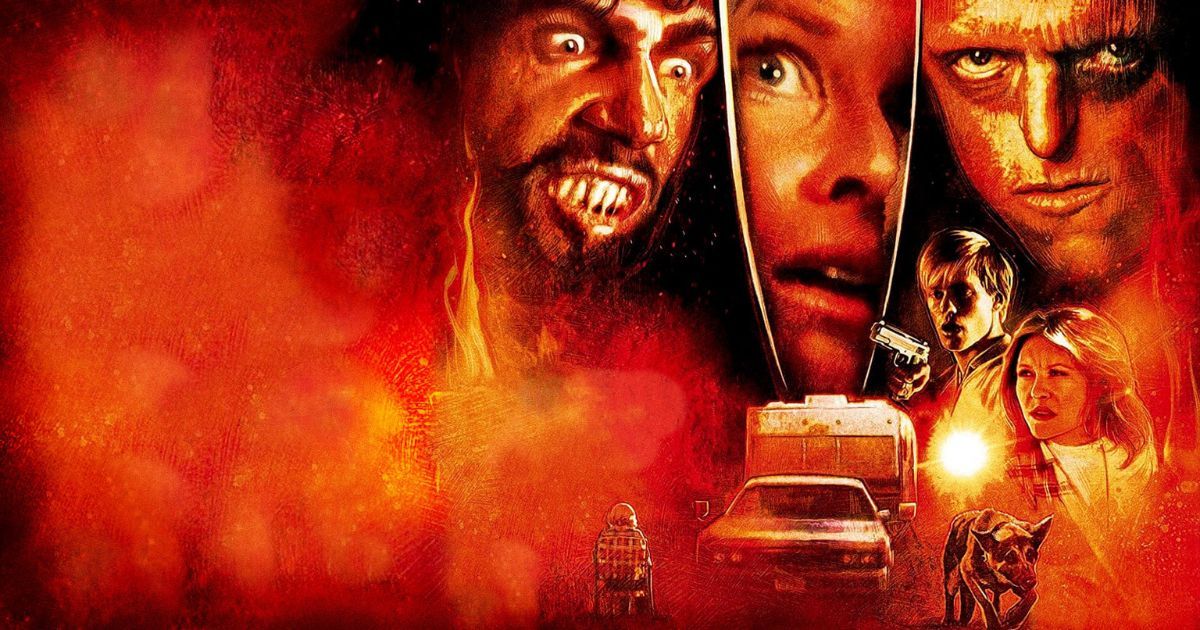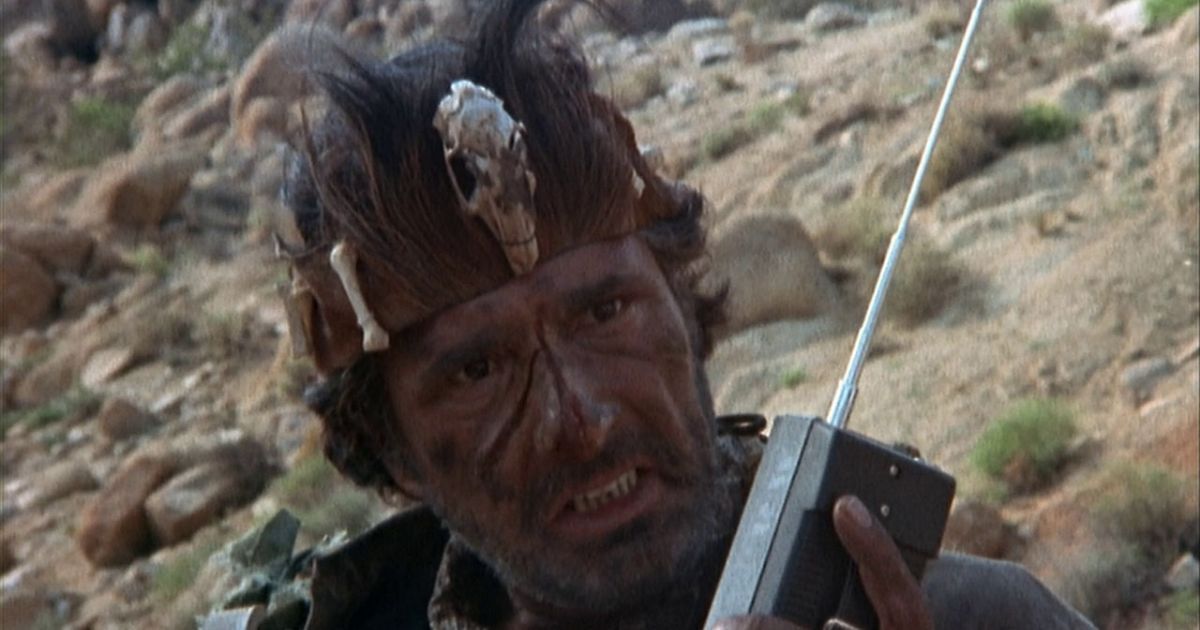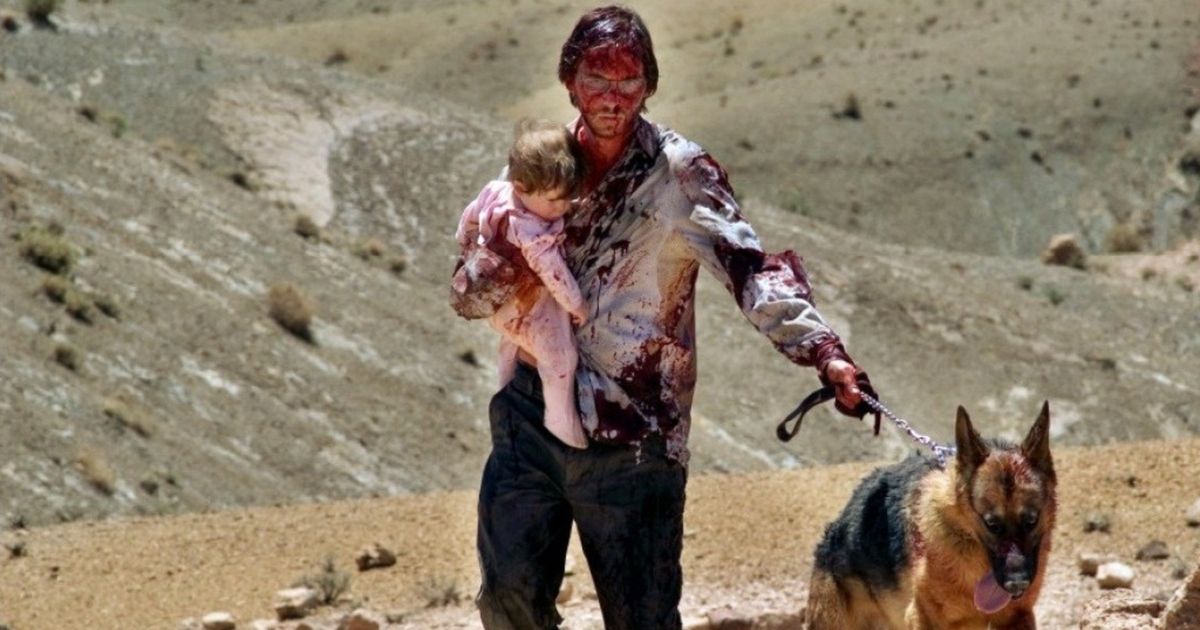Wes Craven’s controversial debut film, The Last House on the Left, was a visceral shock to 1970s moviegoers unaccustomed to extreme violence on film. Despite a bevy of negative reviews and audience protests, the film was a financial success, pulling in over $2 million against a $90,000 budget.
When the time came for Craven’s next feature, his reputation as a horror director preceded him: the only producers offering him money wanted a horror film, despite the director’s desire to explore outside the genre. Producer Peter Locke requested something like Last House, to which Craven sought out stories of human depravity. He eventually came across the Scottish legend of Sawney Bean and his cannibalistic clan of incestuous offspring.
Inspired just as much by the legend itself as the dispassionate inhumanity of its end, Craven set to work on his sophomore film The Hills Have Eyes. Set in the Nevada Desert, Hills follows a road-tripping family that gets caught up in a nightmare. Stranded in the middle of nowhere, the family must fight to survive against a family of cannibals that call the desert mountains home.
In addition to the Scottish legend, Craven was also inspired by John Ford’s 1940 adaptation of The Grapes of Wrath and 1972’s grindhouse smash hit, The Texas Chain Saw Massacre. What Craven found most interesting about the myth was the focus on the troubling way the family members were executed and what it says about supposedly “civilized” people.
Who Was Sawney Bean?
As the horrific Scottish legend goes, Alexander "Sawney" Bean was born in the 15th century in East Lothian, Scotland, to a tradesman father — depending on where you look, he was a hedge trimmer, ditch digger, tanner, and more. Tradition would have had Bean follow in his father's trade footsteps, but he grew up to have different plans.
As a young man, Alexander traveled west, settling in Ayrshire and marrying a woman most often referred to as Black Agnes Douglas. They made their home in a remote, coastal cave in Bennane Head on the Galloway coast where they were hidden away whenever high tide rolled in.
To support himself and his new wife, Bean took to robbing and murdering travelers passing on the nearby roads between towns. Bean had another proclivity that not only got rid of the evidence but kept his burgeoning family fed: cannibalism.
Sawney Bean, Black Agnes, and their brood of 14 children and 32 grandchildren ate these victims, preserving the flesh they didn’t consume by pickling it. For over two decades, the local missing persons list grew exponentially, and it became obvious to the nearby townsfolk that something was amiss.
How Was Sawney Bean Caught?
The Bean clan was so good at hiding their crimes that none of them were even suspects in the case. This worked quite well over the years, but it would eventually come to a swift and brutal end. One night, the clan of cannibals ambushed a couple as they normally did. Unfortunately for them, these victims fought back.
The Beans pulled the woman from her horse before stripping and disemboweling her. The man with her saw this and desperately fought back until another group came across the terrible sight. They fought off the Beans until the cannibals retreated; this would turn out to be the beginning of the end.
The man brought his story to the Chief Magistrate of Glasgow along with the evidence of his wife’s murder and several eyewitness accounts. In light of the rapidly growing list of missing persons in the area over the years, the Magistrate brought the case straight to the top. Accompanied by a small army of about 400, several dogs, and a group of local volunteers, King James VI led the search through the Ayrshire countryside and along the coast to find the devilish Beans.
The dogs eventually led the searchers to the Bennane cave the Beans called home where they found the grisly truth. Strewn throughout the cave were the spoils of the Bean’s raids: money, jewels, clothes, and hundreds of body parts hanging up as if the cave were a butcher shop from Hell.
After a fight between the Beans and the search party, the family was arrested and brought to Edinburgh where they were all sentenced to death. The 21 women were burned alive, while the 27 men were dismembered, their arms and legs cut off and the bodies left to bleed out.
Did Sawney Bean Really Exist?
The legend of Sawney Bean is straight out of a horror movie, so it’s no wonder Wes Craven used it as inspiration for his sophomore film. But there’s little evidence to suggest that the Bean clan ever existed. Instead, the story was likely a part of English propaganda meant to smear the Scots during the 18th-century Jacobite uprisings.
“Sawney” was a derogatory term for cartoonishly barbaric Scots. In a BBC Scotland article on the story, Scottish historian Dr. Louise Yeoman likens the name to calling an Irish character “Irishman Paddy.” The idea that there was a barbaric Scot cannibalizing his own was like red meat to a public already primed to demonize their neighbors to the north.
In addition to the lack of evidence that Sawney Bean existed, Dr. Yeoman cites the story’s historical inaccuracy, arguing that if King James VI had led the search party, he would have made sure everyone knew about it as he had when his life was in danger during the Gunpowder Plot. Dr. Yeoman states, “If James had successfully led an expedition to face down a well-armed group of bloodthirsty cannibals – we would have never heard the end of it.”
And yet, there’s no documented evidence this was the case. Regardless of the veracity of the Sawney Bean legend, the story is a fascinating peek at the sensational horrors of another time and a reminder that, though times may change, our deepest fears do not.




